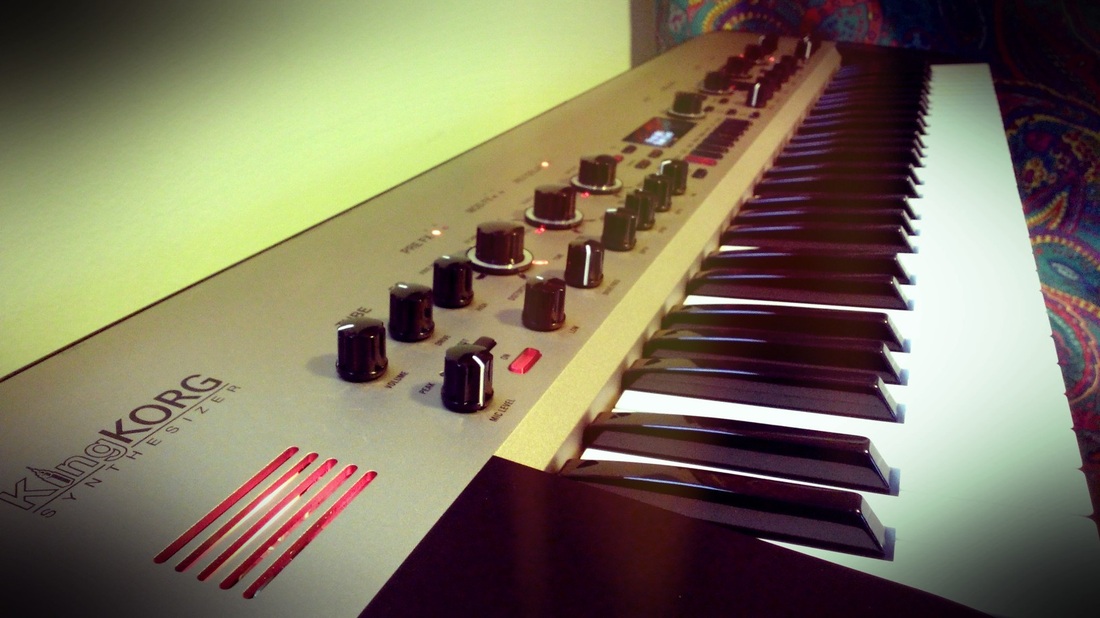I shot a quick and dirty video of the studio with my Windows phone yesterday and posted it to the Atomic Shadow FaceBook page. So far it has been seen by far more people than saw my last SoundCloud post of the Black Sun piece. So it seems that a lot of people are more interested in the gear than in the end result. That is fair enough. It is a serious pile of equipment.
So what are you seeing here?
It is a collection of vintage signal generators, MU synth modules, modern effects, old tape machines, an old sampler, lab gear and an oscilloscope. The green metal cabinets have my live rig (with blinky lights) and my recording gear which is sitting on the counter space.
The video begins with the seldom seen, other side of the room. This is where the all important refrigerator sits, just inside the door. Next to that are the equally important Eames chairs. My assistant, George, is relaxing on one of them as usual. Some my be surprised to see two laptops on that side of the room. The old white one is mostly doing e-mail duties these days. If you have sharp eyes you may see my favorite software synth open on the second one, next to the new King Korg.
You may notice that there are two black and white video monitors in the rack. This is where I play old science fiction movies from a couple of DVD players. The Akai filter unit has been removed to make room for the EMW-300, now sitting between the old reel to reel and the cassette deck . I have been experimenting with a sequence using the 300 and that is what is running in the background. I am not certain that sequencing is for me. Time will tell.
In time, the JP-8080 will probably be replaced in the main rack and be moved to the west wall, above the King Korg. More likely I will sell it off to finish off the modular. In all honesty the King Korg covers all of the same bases and more.
So that is the setup as of February, 2015. It's always morphing. There is a new album in the works. Some final recording and mixing is coming along reasonably well. More on that at a later date. Thanks for watching!
So what are you seeing here?
It is a collection of vintage signal generators, MU synth modules, modern effects, old tape machines, an old sampler, lab gear and an oscilloscope. The green metal cabinets have my live rig (with blinky lights) and my recording gear which is sitting on the counter space.
The video begins with the seldom seen, other side of the room. This is where the all important refrigerator sits, just inside the door. Next to that are the equally important Eames chairs. My assistant, George, is relaxing on one of them as usual. Some my be surprised to see two laptops on that side of the room. The old white one is mostly doing e-mail duties these days. If you have sharp eyes you may see my favorite software synth open on the second one, next to the new King Korg.
You may notice that there are two black and white video monitors in the rack. This is where I play old science fiction movies from a couple of DVD players. The Akai filter unit has been removed to make room for the EMW-300, now sitting between the old reel to reel and the cassette deck . I have been experimenting with a sequence using the 300 and that is what is running in the background. I am not certain that sequencing is for me. Time will tell.
In time, the JP-8080 will probably be replaced in the main rack and be moved to the west wall, above the King Korg. More likely I will sell it off to finish off the modular. In all honesty the King Korg covers all of the same bases and more.
So that is the setup as of February, 2015. It's always morphing. There is a new album in the works. Some final recording and mixing is coming along reasonably well. More on that at a later date. Thanks for watching!
Post by Atomic Shadow.


 RSS Feed
RSS Feed
